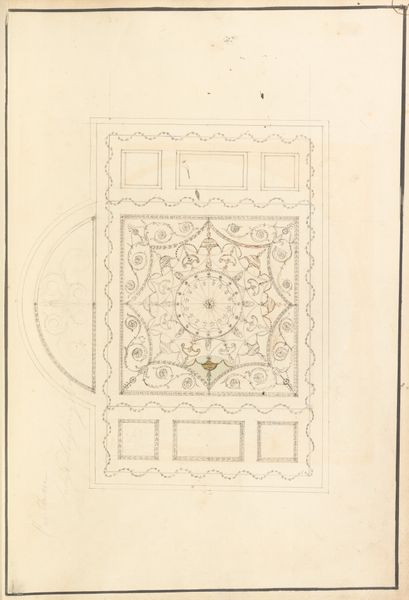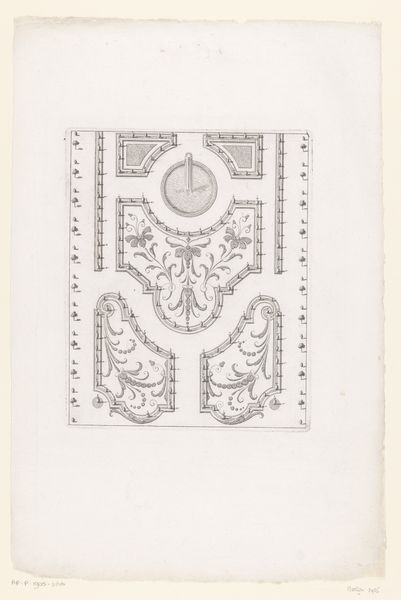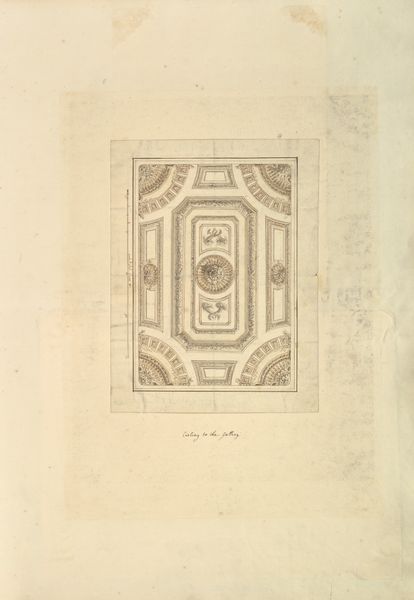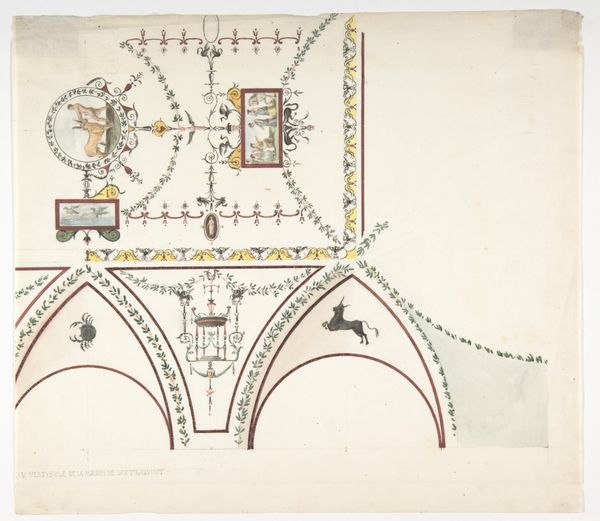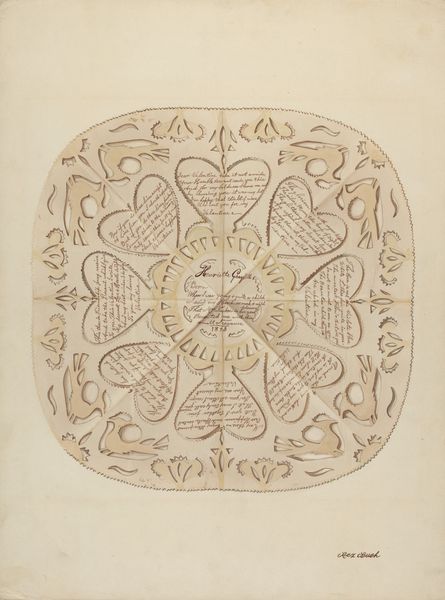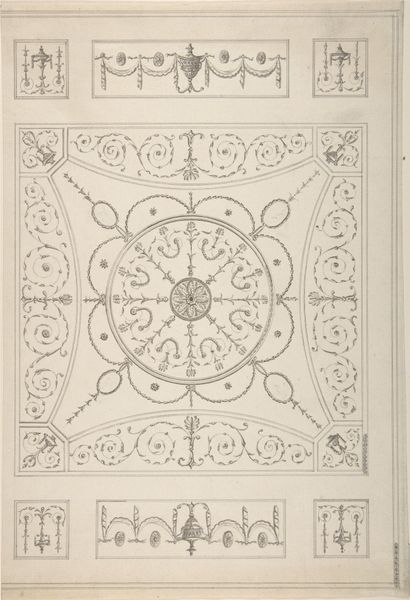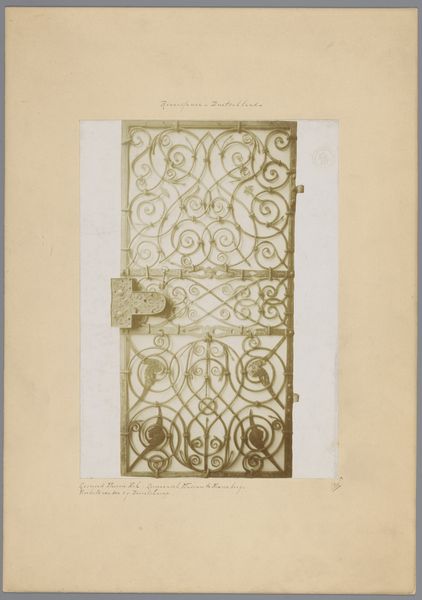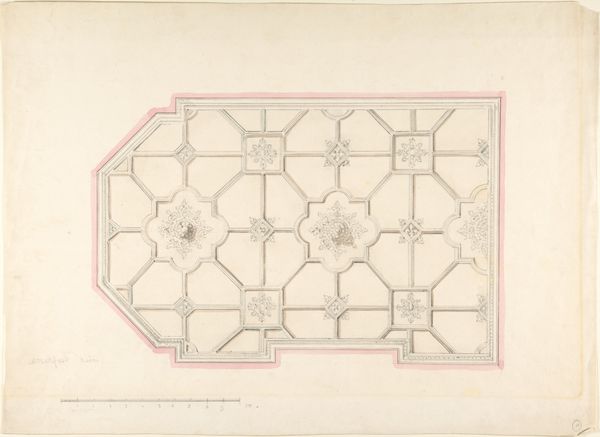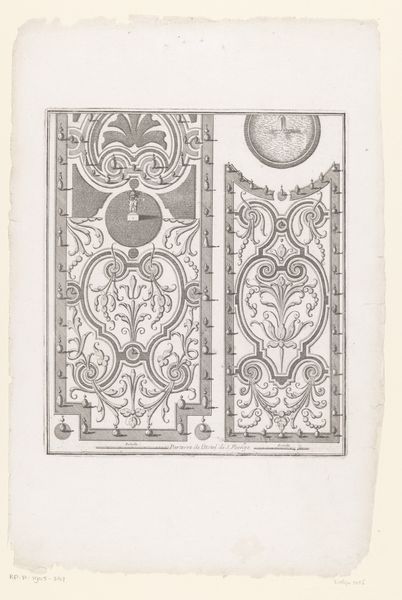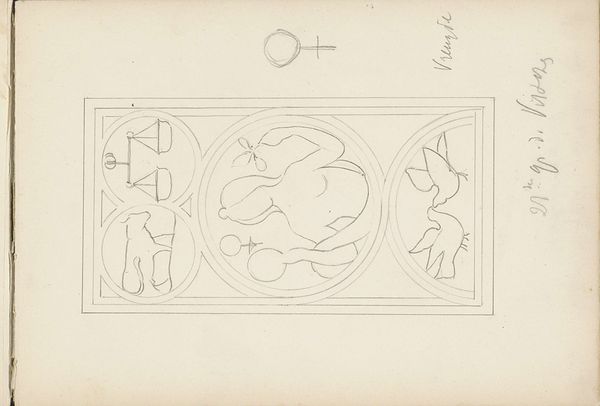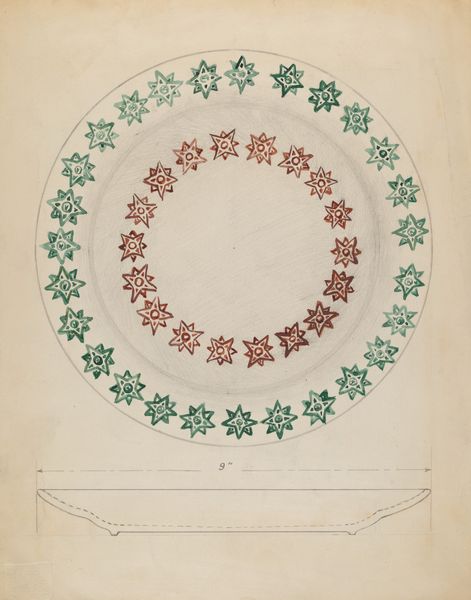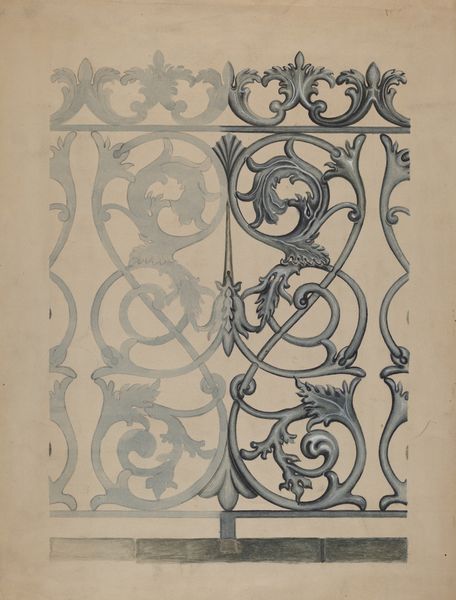
Design for the Ceiling of a Bedchamber at Goodwood House, Sussex 1795 - 1805
0:00
0:00
drawing, print, architecture
#
drawing
#
neoclacissism
# print
#
form
#
geometric
#
line
#
decorative-art
#
architecture
Dimensions: sheet: 20 1/4 x 14 3/16 in. (51.5 x 36 cm)
Copyright: Public Domain
Editor: This drawing, "Design for the Ceiling of a Bedchamber at Goodwood House, Sussex," created by James Wyatt between 1795 and 1805, showcases intricate geometric designs in pen and ink. There's a certain delicate, almost ephemeral quality to the whole composition. What stands out to you when you look at it? Curator: What strikes me is how this design embodies the power structures inherent within Neoclassicism. We see an explicit revival of classical motifs, and the question arises, who has access to this "classical" ideal and who is excluded? This idealized vision often served the elite, reinforcing their social status through associations with historical empires. Editor: That's an interesting point. It's easy to just see it as pretty decoration. Curator: Exactly. The geometry itself isn't neutral; the perfect symmetry, the controlled lines – it all speaks to an era obsessed with order, with controlling not only aesthetics but also society. Consider the context of Goodwood House; a site of privilege. Does the design reflect or challenge the political turbulence of the late 18th century? The French Revolution casts a long shadow, influencing attitudes toward ornamentation and aristocratic display. Editor: So, the sparseness is a statement in itself? Curator: It could be. What does "tasteful" restraint mean in a time of upheaval? Is it a quiet consolidation of power, a way of signaling refinement and therefore superiority? Where do we situate the labor that made this drawing into a habitable ceiling? The drawing renders a dream, a goal. Editor: I see, it prompts so many different questions beyond the immediate visual impression. Thanks! Curator: Precisely! Art serves as an entry point for critically examining societal narratives and prevailing political contexts.
Comments
No comments
Be the first to comment and join the conversation on the ultimate creative platform.
